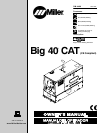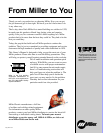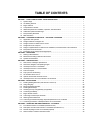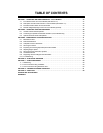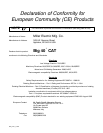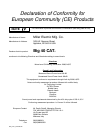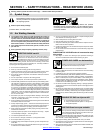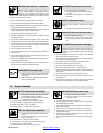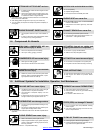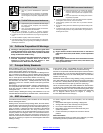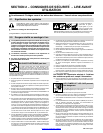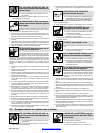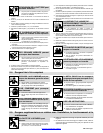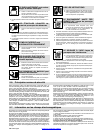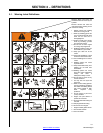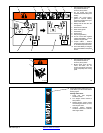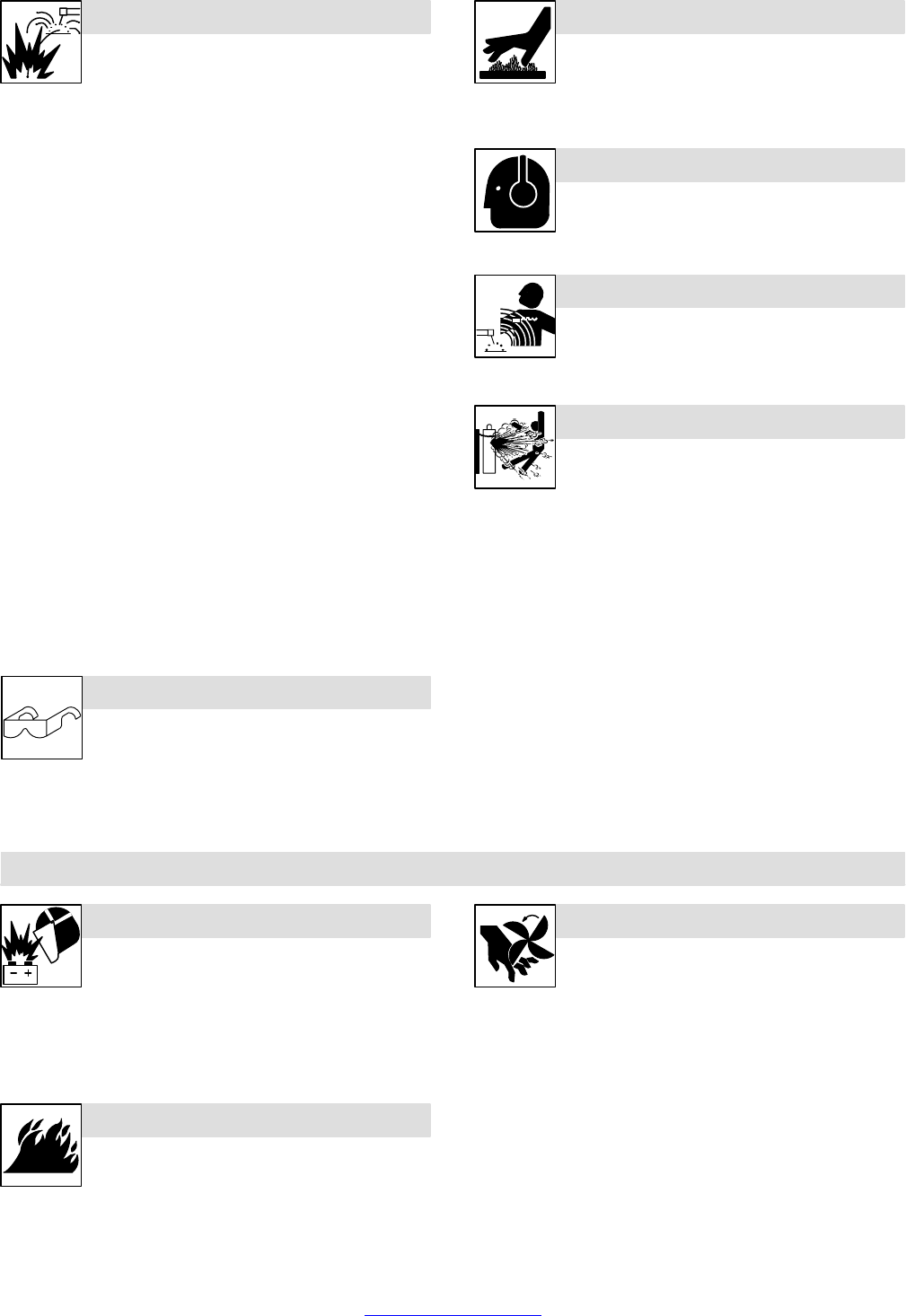
OM-4406 Page 2 Return To Table Of Contents
Welding on closed containers, such as tanks, drums, or
pipes, can cause them to blow up. Sparks can fly off from the
welding arc. The flying sparks, hot workpiece, and hot
equipment can cause fires and burns. Accidental contact of electrode to metal
objects can cause sparks, explosion, overheating, or fire. Check and be sure
the area is safe before doing any welding.
WELDING can cause fire or explosion.
D Protect yourself and others from flying sparks and hot metal.
D Do not weld where flying sparks can strike flammable material.
D Remove all flammables within 35 ft (10.7 m) of the welding arc. If this is not
possible, tightly cover them with approved covers.
D Be alert that welding sparks and hot materials from welding can easily go
through small cracks and openings to adjacent areas.
D Watch for fire, and keep a fire extinguisher nearby.
D Be aware that welding on a ceiling, floor, bulkhead, or partition can cause
fire on the hidden side.
D Do not weld on closed containers such as tanks, drums, or pipes, unless
they are properly prepared according to AWS F4.1 (see Safety Standards).
D Connect work cable to the work as close to the welding area as practical to
prevent welding current from traveling long, possibly unknown paths and
causing electric shock and fire hazards.
D Do not use welder to thaw frozen pipes.
D Remove stick electrode from holder or cut off welding wire at contact tip
when not in use.
D Wear oil-free protective garments such as leather gloves, heavy shirt, cuf-
fless trousers, high shoes, and a cap.
D Remove any combustibles, such as a butane lighter or matches, from your
person before doing any welding.
D Follow requirements in OSHA 1910.252 (a) (2) (iv) and NFPA 51B for hot
work and have a fire watcher and extinguisher nearby.
FLYING METAL can injure eyes.
D Welding, chipping, wire brushing, and grinding cause
sparks and flying metal. As welds cool, they can
throw off slag.
D Wear approved safety glasses with side shields even
under your welding helmet.
HOT PARTS can cause severe burns.
D Allow cooling period before maintaining.
D Wear protective gloves and clothing when working on
a hot engine.
D Do not touch hot engine parts or just-welded parts
bare-handed.
NOISE can damage hearing.
Noise from some processes or equipment can damage
hearing.
D Wear approved ear protection if noise level is high.
MAGNETIC FIELDS can affect pacemakers.
D Pacemaker wearers keep away.
D Wearers should consult their doctor before going
near arc welding, gouging, or spot welding opera-
tions.
Shielding gas cylinders contain gas under high pressure. If
damaged, a cylinder can explode. Since gas cylinders are
normally part of the welding process, be sure to treat them
carefully.
CYLINDERS can explode if damaged.
D Protect compressed gas cylinders from excessive heat, mechanical
shocks, slag, open flames, sparks, and arcs.
D Install cylinders in an upright position by securing to a stationary support or
cylinder rack to prevent falling or tipping.
D Keep cylinders away from any welding or other electrical circuits.
D Never drape a welding torch over a gas cylinder.
D Never allow a welding electrode to touch any cylinder.
D Never weld on a pressurized cylinder — explosion will result.
D Use only correct shielding gas cylinders, regulators, hoses, and fittings de-
signed for the specific application; maintain them and associated parts in
good condition.
D Turn face away from valve outlet when opening cylinder valve.
D Keep protective cap in place over valve except when cylinder is in use or
connected for use.
D Read and follow instructions on compressed gas cylinders, associated
equipment, and CGA publication P-1 listed in Safety Standards.
1-3. Engine Hazards
BATTERY EXPLOSION can BLIND.
D Always wear a face shield, rubber gloves, and protec-
tive clothing when working on a battery.
D Stop engine before disconnecting or connecting bat-
tery cables or servicing battery.
D Do not allow tools to cause sparks when working on a battery.
D Do not use welder to charge batteries or jump start vehicles.
D Observe correct polarity (+ and −) on batteries.
D Disconnect negative (−) cable first and connect it last.
FUEL can cause fire or explosion.
D Stop engine and let it cool off before checking or add-
ing fuel.
D Do not add fuel while smoking or if unit is near any
sparks or open flames.
D Do not overfill tank — allow room for fuel to expand.
D Do not spill fuel. If fuel is spilled, clean up before starting engine.
D Dispose of rags in a fireproof container.
D Always keep nozzle in contact with tank when fueling.
MOVING PARTS can cause injury.
D Keep away from fans, belts, and rotors.
D Keep all doors, panels, covers, and guards closed
and securely in place.
D Stop engine before installing or connecting unit.
D Have only qualified people remove guards or covers for maintenance
and troubleshooting as necessary.
D To prevent accidental starting during servicing, disconnect negative (−)
battery cable from battery.
D Keep hands, hair, loose clothing, and tools away from moving parts.
D Reinstall panels or guards and close doors when servicing is finished
and before starting engine.
D Before working on generator, remove spark plugs or injectors to keep
engine from kicking back or starting.
D Block flywheel so that it will not turn while working on generator compo-
nents.



